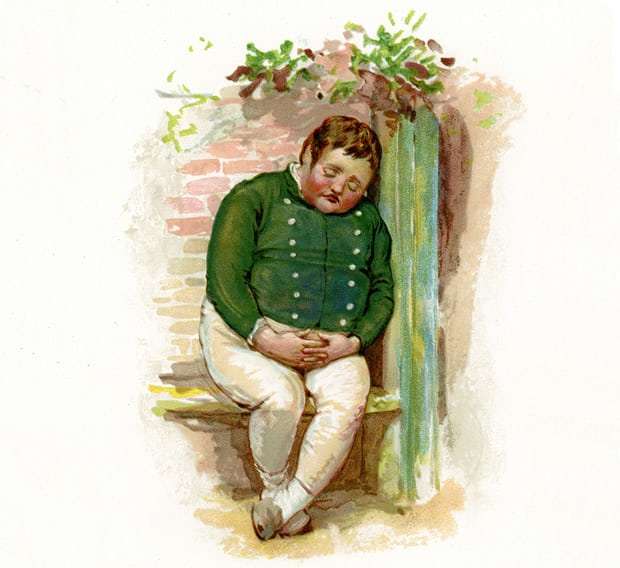Fat boy Joe, the messenger in The Pickwick Papers, is “always asleep... he goes on errands fast asleep, and snores as he waits at the table”.
The chubby servant’s constant snoozing becomes a running joke in Dickens’ first novel, but the character also served as an unlikely inspiration for a breakthrough in sleep science.
After observing similar symptoms in an obese poker player who fell asleep holding a winning hand, in 1956 American doctors named “Pickwickian syndrome” – now known as obesity hypoventilation syndome – in which severe obesity causes breathing problems that lead to daytime sleepiness.
The example is one of several highlighted in a new exhibition Charles Dickens: Man of Science where the author’s forensic descriptions of illness anticipate or even inspire later advances in medicine.
“Dickens is an unbelievably acute observer of human behaviours,” said Frankie Kubicki, curator at the Charles Dickens Museum. “He captures these behaviours so perfectly that his descriptions can be used to build relationships between symptoms and disease.”
Dickens’ unusually vivid descriptions of diseases is noted in an obituary of the author in the first edition of the British Medical Journal from 1870, which will go on display. “None, except medical men, can judge of the rare fidelity with which he [described] the devious paths of disease and death,” it states.
In Dombey and Son, Mrs Skewton’s “last illness” leaves her unable to speak and with right-sided paralysis – an uncanny anticipation of the clinical research of Paul Broca, who discovered through studying brain injured patients that speech function is localised on one side of the brain.
“That hadn’t been observed in the medical literature at all by then – that speech loss and paralysis can occur together,” said Buckland. “It shows that different functions like speech are localised in different parts of the brain.”
In other cases, Dickens’ descriptions were so precise that they were used to teach diagnosis. William Aitken’s Science and Practice of Medicine, from 1863, used a passage from Nicholas Nickleby in which Smike is dying from tuberculosis to describe the symptoms of “hectic fever”, where the final flush of high temperature means that “death takes the glow and hue of life”.
The authors’ writing also touches on conditions that have more recently come to the fore. In Bleak House, Mr Krook, a gin-drinking rag and bottle merchant, is apparently dyslexic. He hoards documents that he will never read because “he can make all the letters separately and he knows most of them separately when he sees them ... but he can’t put them together”.
In the case of Fat boy Joe, the character’s disconcertingly loud snore hints that he may also be troubled by sleep apnea, in which a person’s breathing momentarily stops – normally followed by a sudden gasping for breath.
The exhibition also highlights Dickens’ blindspots, including his enthusiasm for mesmerism, a form of hypnotism popularised in the nineteenth century by the doctor John Elliotson, who was a friend of Dickens. The author was such a strong exponent of the practice that he would attempt to mesmerise people himself and he starred in the 1857 play Animal Magnetism (another name for mesmerism) by Elizabeth Inchbald, the playbill of which appears in the exhibition.
Drawing on the evidence of his novels, journalism, letters and exchanges with friends, the exhibition reveals Dickens extensive connections with the great scientific and medical thinkers of his day. He corresponded with Michael Faraday – borrowing his notes from the scientist’s Royal Institution Christmas lecture The Chemistry of a Candle. He went on holiday with the chemist Jane Marcet, wrote an obituary of the paleontologist Mary Anning and was admired by the mathematician Ada Lovelace (who asked Dickens to read Dombey and Son to her on her deathbed).
These connections, together with a powerful social conscience, may have inspired the attention to medical detail in Dickens’ work.
“He’s interested in the ways that people living in the city have been abandoned, neglected and mistreated and how that’s affected their bodies,” said Buckland.
During his life-time, Dickens campaigned on sanitation and for better protection for workers who were exposed to injury and illness. He was also an early supporter of Great Ormond Street Hospital, highlighting London’s appalling child mortality rates in a graphic article, entitled Drooping Buds, which describes the streets lined with all the children who had died needlessly.
“He’s linking modern urban life and the social structure of the city with disease,” said Buckland. “You don’t get disease just because you’re living a dissolute lifestyle, it’s because you’re living in a slum that’s been neglected. It’s a social responsibility.”
The Guardian
More about: medicine
















































